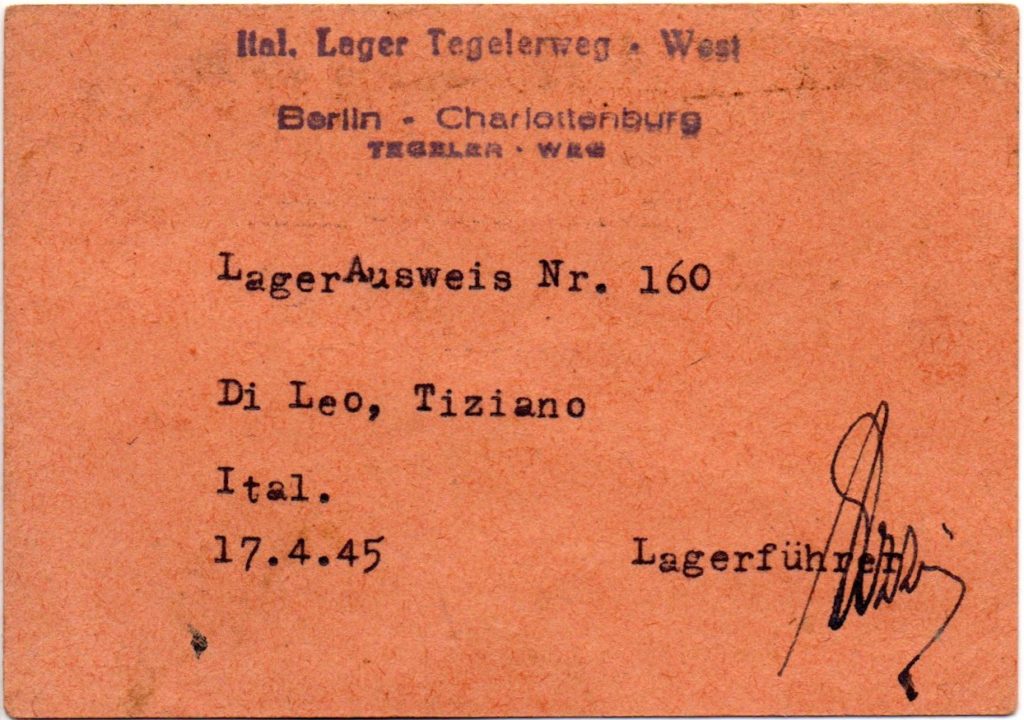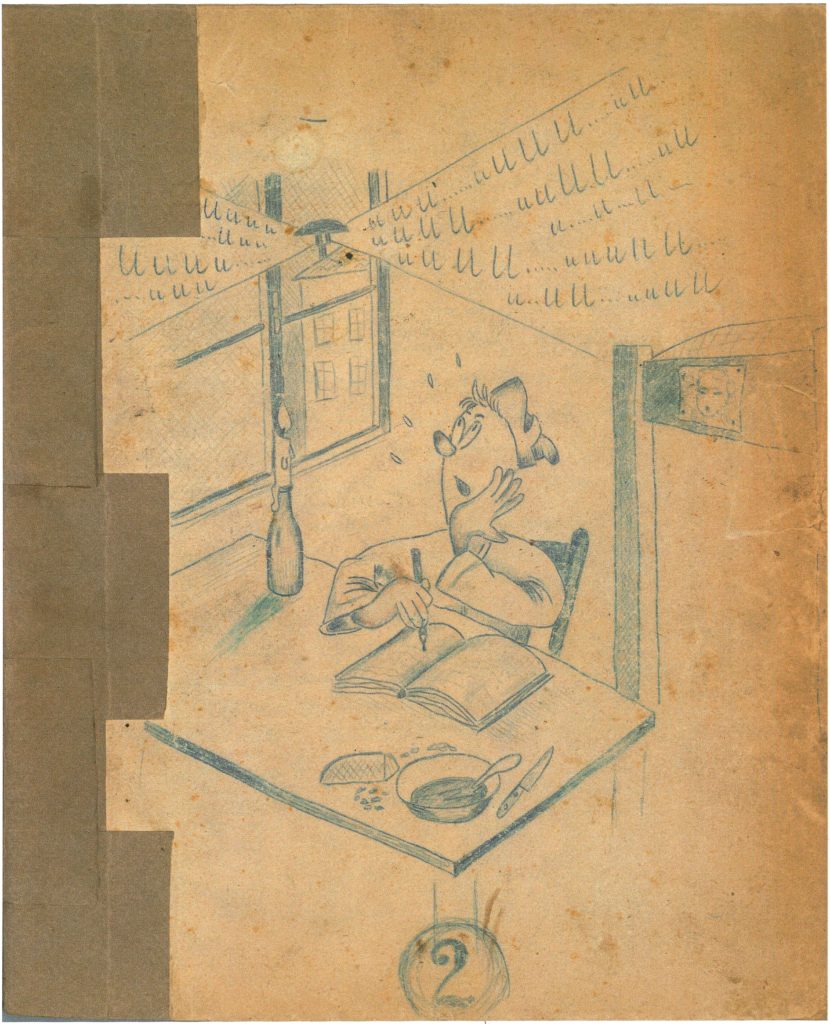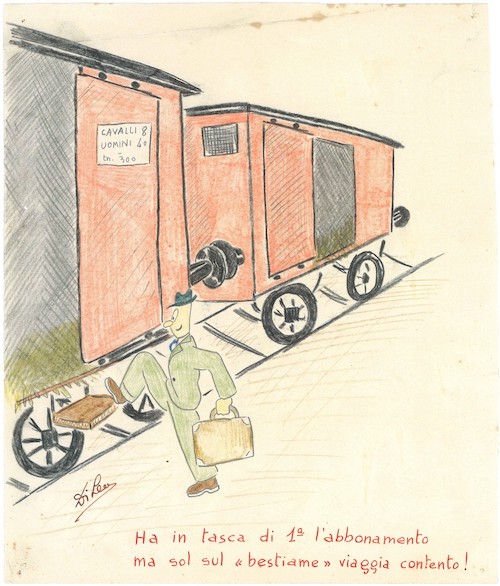From Ally to Prisoner of War
The Italian soldier Tiziano Di Leo (1920-2012) experienced his country entering into an armistice with the Allies on September the 8th of 1943 and the subsequent occupation of northern Italy by the Wehrmacht. Like hundreds of thousands of other Italians who refused to continue fighting for the Germans, he was taken prisoner in Ancona. Di Leo was transported in a cattle car to the Stalag III A camp, from there he was sent to the Siemens-Schuckertwerken in Berlin-Spandau. Di Leo was first housed in the Salzhof labour camp in Rhenaniastrasse, which was destroyed in an air raid in February 1944. After Di Leo was transferred to a new site, he had to walk ten kilometres to the factory. The living conditions were harsh. The guards in the camp and foremen at the factory frequently mishandled the inmates. In the final phase of the war, Di Leo was forced to build barricades and dig anti-tank trenches.
Soviet soldiers liberated Tiziano Di Leo from the “Italian Camp” near the Jungfernheide station on 26 April 1945. He was brought to an international collection camp near Wittenau, and later to Bernau. Di Leo reached his home country again on 4 September 1945.





